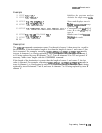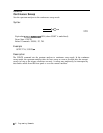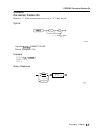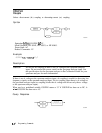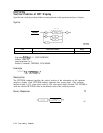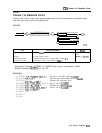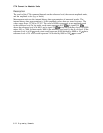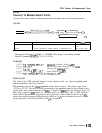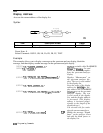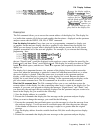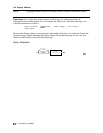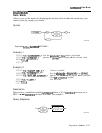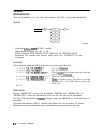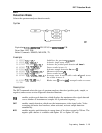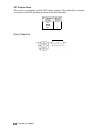
CTM Convert to Measurement Units
CTM
Convert to Measurement Units
Converts the source values to measurement units and places the result in the destination.
Syntax
,-
scJurce
-\
CTM
user-defined variable
XCTM
Item Description/Default
User-defined variable A variable defined by VARDEF or ACTDEF commands
Number
A number expressed in integer, decimal, or exponential form.
R-tfe
Any valid variable
name.
Real number range.
Prerequisite Commands: ACTDEF or VARDEF when using a user-defined variable.
Related Commands:
AUNITS,
CTA, LG, LN, RL.
Example
OUTPUT
718;"VARDEF
A,MPV,O;"
Lleclares
a variable called
A-MPV
OUTPUT
718*"LG*"
OUTPUT
718;"RL'-1ODB;"
Pats the spectrum analyzer in log
m.ook
Changes the
referent
level.
OUTPUT 718;"CTM
A-MPV,-10;"
Stores 8000 in
AXPI?
OUTPUT
718;"DSPLY
A,MPV,13.5;"
DispZuysAiWI?
Description
The result of the CTM command depends on the reference level,
the
current amplitude units,
and the amplitude scale (log or linear).
Measurement units are the
16-bit
amplitude values stored in traces. The values range from
-32,768 to 32,767. The value of 8000 corresponds to an amplitude equal to the reference level.
In log mode, each count represents 0.01
dBm.
A signal 0.01
dBm
above the reference level is at
8001, and a signal 1.0
dBm
below
the
reference level is at 8000 minus 100, or 7900. In linear
mode, 8000 is the reference level and 0 is the 0 volt level. If the reference level is at 80
mV,
each count would represent 0.080 divided by 8000 or 10
pV,
but a reference level of 2.4 volts
would represent 2.4 divided by 8000 or 300
PV
per count.
Programming Commands
5.123



